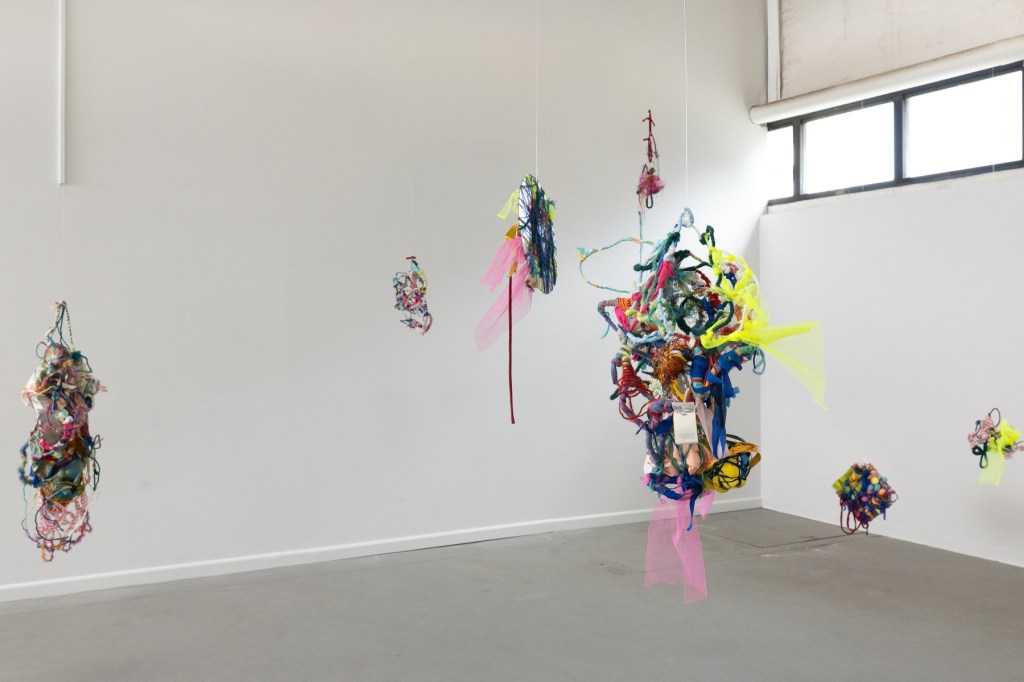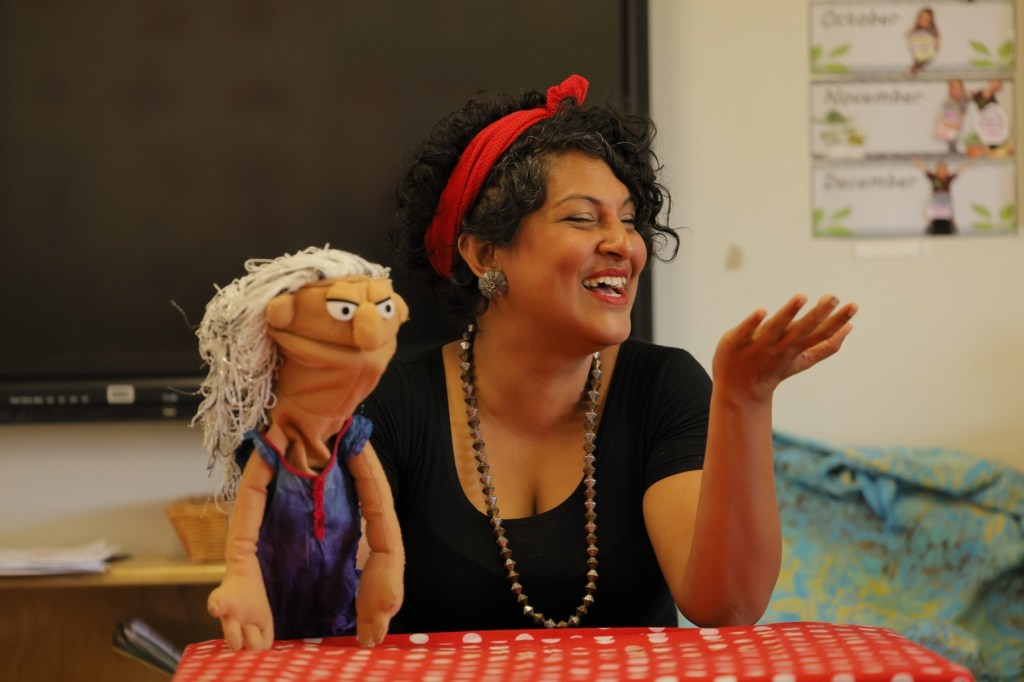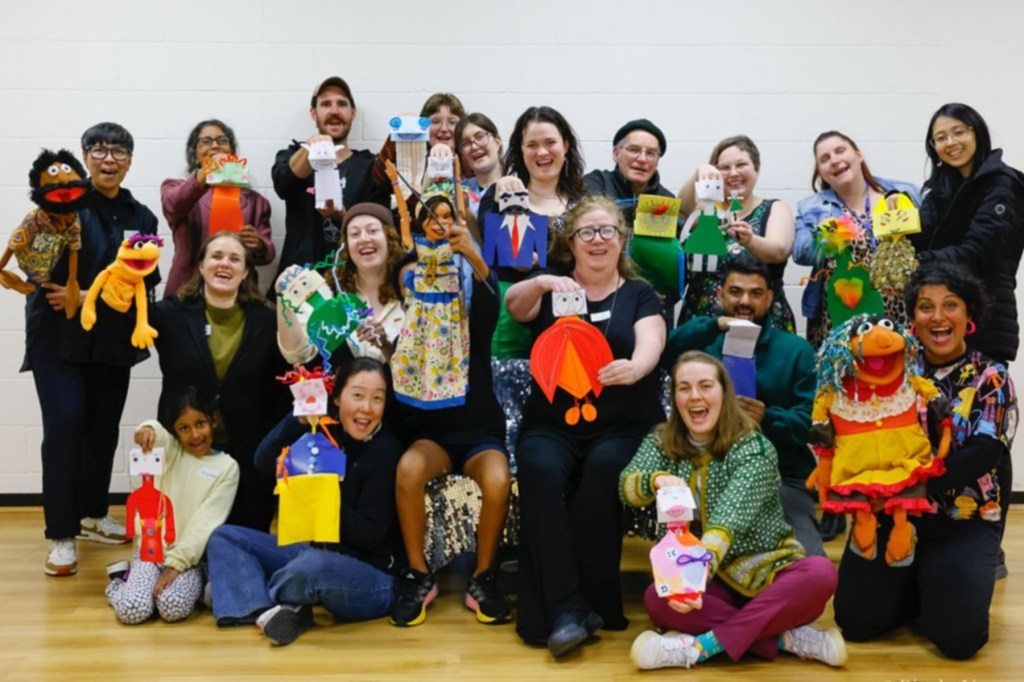Inside Adelaide’s quiet creative resistance

Two OzAsia artists, based at The Mill, are redefining success by swapping commercial pressure for creative purpose. Steph Daughtry explores whether commercial viability should be the only measure used to value the arts.
When visual artist Dai Trang Nguyen started experiencing migraines during Vietnam’s Covid lockdown, she knew something had to change.
At the time, she was working demanding hours as an art director on multiple advertising campaigns. When illness forced her to take time off, she started doing what she always did – she drew. But, while sketching might have been her day job, this time she drew for herself.
On her first day back to work, the migraines came back.
“It was the first sign to tell me – something’s not working for you any more,” she says over coffee and matcha at a city cafe. “I began asking, ‘What am I doing here?’”
The experience became the catalyst for a major life shift. Dai Trang left the advertising world, moved to Adelaide and retrained in contemporary art.
Now, Dai Trang’s practice – through a process she calls Moment Art – focuses on creating intuitive “marks of presence” through textiles, found objects and mixed media. Deeply rooted in Buddhist spirituality, her work resists the commercial logic of her previous career.

You might like
“My art often explores emotion and feeling, and that’s very intangible,” she says.
Developing an artistic practice in opposition to commercialism is no easy feat. Especially when most contemporary artists are taught to view themselves as small business owners, part of a market-driven growth economy.
In part driven by the “creative industries” approach to policy making, artists’ work has been promoted as an exciting and unlimited source of economic growth. In practice, however, this risks reducing all arts policy to economic policy. Raising the question, should commercial viability be the only measure we use to value the arts?
The tension between economic potential and cultural value also resonates with Sulochana Dissanayake, a Sri Lankan theatre-maker and puppeteer who recently relocated to Adelaide.
Determined to launch a sustainable career in the performing arts, Sulo studied a double major in theatre and economics at Bates College in the US. She is now the founder of Power of Play, a touring puppetry company using the power of play to heal war-torn communities in Sri Lanka.

“Working in a post-war context in Sri Lanka, joy had been literally drained out,” she says. “Nobody had time for it, so creating joy again in our communities became a fundamental act of healing.”
In Sri Lanka, Sulo was able to command fair rates for her work after 14 years spent building her company. Conversely, when negotiating freelance rates in Adelaide, she found that gigs were being capped at a rate she hadn’t charged since the beginning of her career.
Subscribe for updates
“What I’ve found the most striking in moving from Sri Lanka to Adelaide is that artists’ work doesn’t have as much value,” she says.
It’s a familiar challenge for many local artists navigating the contradictions of South Australia’s “creative industries” framework – far from the desirable working environments promised, instead artists face growing levels of precarious employment, low wages and deep levels of labour insecurity.
“We have a saying in Sri Lanka: ‘The drummer can’t build the drum and sell it at the same time’,” Sulo says. “Expecting the drummer to build the drum, play the drum, pass on the heritage of drumming and sell the drum – I mean, that’s ridiculous. It’s humanly impossible.”
While she is still running her company remotely as well as developing new work for OzAsia, Sulo has had to take on full-time work, which limits her capacity to engage in her artistic profession.
“I can’t be a full-time artist in Adelaide because no one can,” she says.

When asked about the most challenging aspects of her practice, Dai Trang speaks to a sense that “much of our current society tends to value what can be measured physically”.
“It’s like swimming in the river and the flow of society is so strong with different values,” she says. “I’m trying to swim in a slightly smaller branch of the river.”
However, she acknowledges that, while it’s tough, it is the kind of work that allows her to align most with her values. Not to mention that, “what helps a lot is knowing there are still other people” willing to take that journey with her.
Sulo has similarly found solace within Adelaide’s artistic community. Participating in art has allowed her to “gather a tribe” and build a community – important because, as she notes, “artists survive through collaboration”.
The next step, both agree, is for audiences to keep showing up. Every ticket, every exhibition, every gig counts. Supporting local art sends a message that it is valuable – and worth investing in.
Both artists will showcase new work at this year’s OzAsia Festival, which runs until November 9.
Dai Trang’s exhibition, alONEness – một, is supported by The Mill through the Kayangan Visual Arts Studio Residency. The exhibition is free to attend at The Mill until November 28, with the opening event on Friday, October 31 at 5.30pm. Book at: themilladelaide.com/events/2025/exhibition-dai-trang-nguyen-aloneness-mot
Sulo’s showing, Free-doom Down Under, is also supported by The Mill through the OzAsia Festival Residency. There are three work-in-progress showings at The Mill on Thursday, October 23 at 5pm and Friday, October 24 at 4pm and 6pm. Tickets cost $10, from events.humanitix.com/ozasia-festival-sulochana-dissanayake-free-doom-down-under/tickets
The Mill is located at 154 Angas Street Adelaide.





